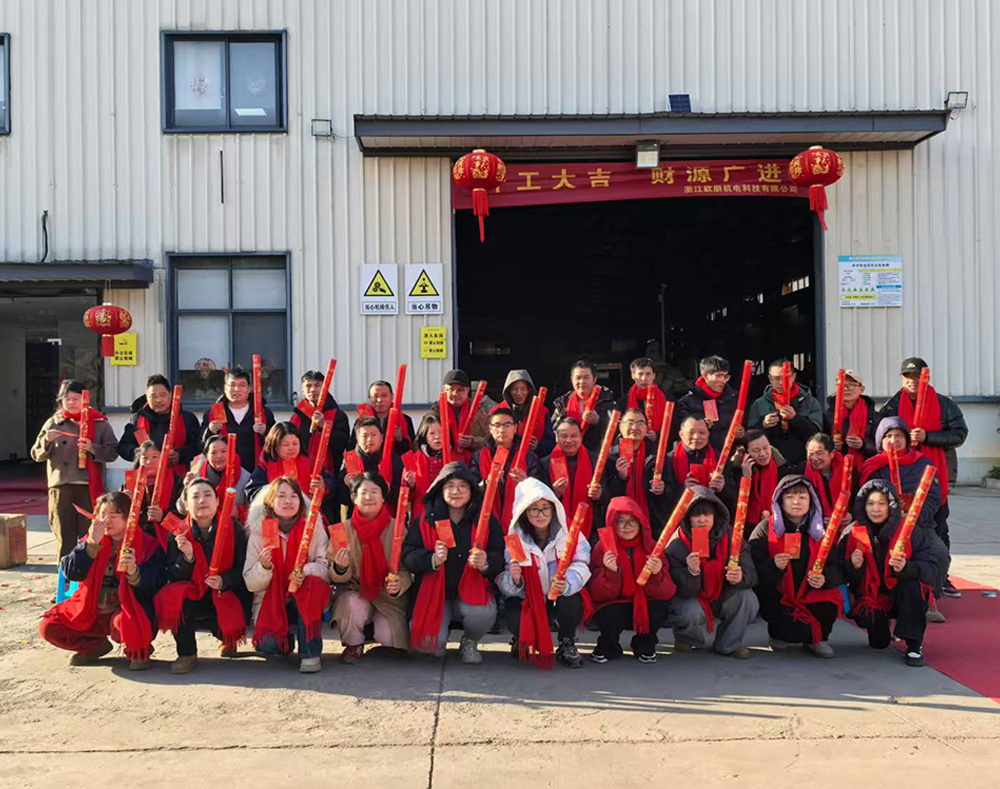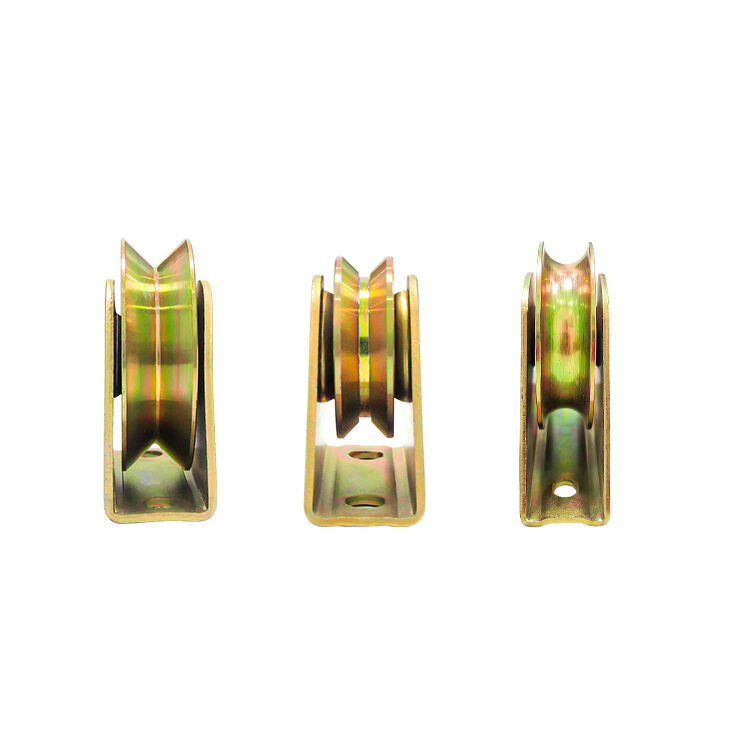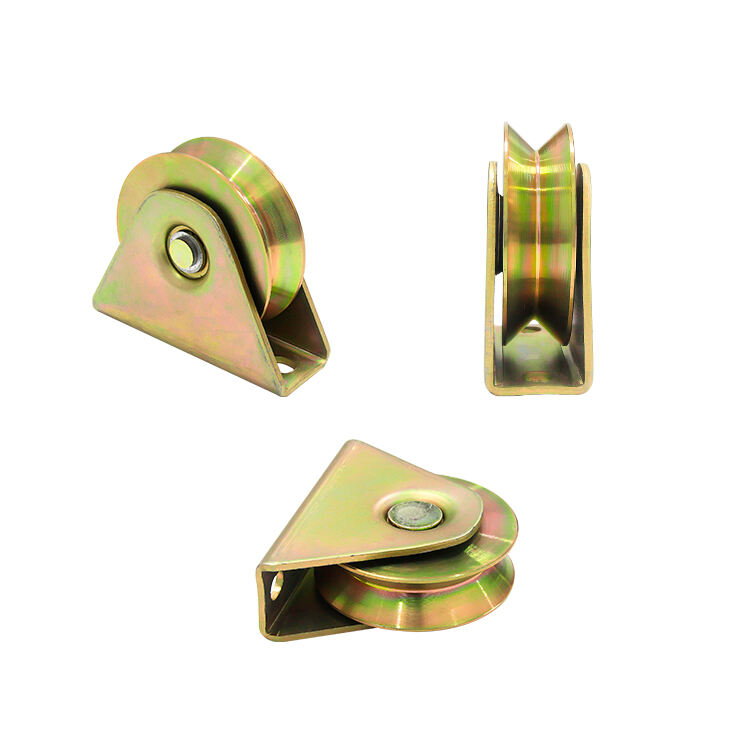Componenti Essenziali delle Carrucole Metalliche in Ferro per Cancelli Scorrevoli
Materiali delle Staffe: Piastre in Ferro Freddo vs Caldo Laminato
La scelta tra lamiere di ferro a freddo e a caldo fa davvero la differenza per quanto riguarda la resistenza e la durata nel tempo dei cancelli scorrevoli. Il ferro laminato a freddo viene lavorato mantenendolo freddo, ottenendo così misure più precise e una superficie molto più liscia. Per questo motivo è spesso preferito per progetti in cui l'aspetto estetico è importante. Il ferro laminato a caldo invece viene modellato a temperature molto elevate, il che lo rende più economico per lavori impegnativi grazie alla sua capacità di sopportare gli stress. Nella costruzione di quei supporti per cancelli, le lamiere laminate a freddo si distinguono davvero per la loro maggiore resistenza e il loro aspetto più pulito, un fattore cruciale per mantenere stabili nel tempo i sistemi a puleggia. La maggior parte dei produttori conosce già questi aspetti e sa che scegliere il materiale corretto fin dall'inizio permette di risparmiare in futuro, riducendo i danneggiamenti e gli interventi di riparazione.
Composizione delle Ruote: Acciaio al Carbonio Medio Vantaggi
Nella realizzazione di rulli per pulegge di cancelli scorrevoli, l'acciaio al carbonio medio si distingue perché offre il giusto equilibrio tra durezza sufficiente per durare a lungo e flessibilità necessaria per sopportare lo stress senza rompersi. Cosa rende così valido questo materiale? Beh, resiste all'usura anche quando sottoposto a carichi pesanti giorno dopo giorno. Rispetto ad altri tipi di acciaio disponibili sul mercato, l'acciaio al carbonio medio si dimostra particolarmente efficace in situazioni in cui i cancelli vengono utilizzati frequentemente e necessitano di componenti resistenti all'uso continuativo. Test pratici hanno dimostrato che questi rulli possono sopportare sollecitazioni notevoli mantenendo la loro forma e funzionalità. Per i proprietari di immobili che valutano le spese a lungo termine, passare a rulli in acciaio al carbonio medio significa meno guasti e minori costi per sostituire parti logorate negli anni. L'investimento iniziale viene ammortizzato grazie alla riduzione degli interventi di manutenzione e delle spese impreviste per riparazioni future.
Fattori di durata nei sistemi di porte scorrevoli pesanti
Tipi di cuscinetti per un funzionamento fluido della porta
Per quanto riguarda i sistemi per porte scorrevoli heavy duty, scegliere i giusti cuscinetti fa tutta la differenza per il corretto funzionamento. La maggior parte delle installazioni utilizza tre tipi principali: cuscinetti a sfera, cuscinetti conici e cuscinetti a rulli, ciascuno adatto a situazioni diverse. I cuscinetti a sfera funzionano molto bene perché riducono l'attrito, quindi vengono spesso scelti per porte che non devono sopportare carichi eccessivi. I cuscinetti conici sono i migliori quando si devono gestire carichi più pesanti, poiché sono in grado di sopportare sia la pressione laterale che verticale contemporaneamente. I cuscinetti a rulli rappresentano un'altra opzione da considerare, specialmente quando lo spazio è limitato ma si necessita comunque di un componente sufficientemente resistente e duraturo. Fare la scelta corretta è davvero importante per le prestazioni della porta scorrevole. Un cuscinetto sbagliato può creare attrito inutile, mentre uno adatto permette alla porta di scorrere con il minimo sforzo richiesto al motore o all'operatore.
La quantità di manutenzione necessaria varia a seconda del tipo di cuscinetto e influisce sulla durata di un sistema di cancelli scorrevoli. I cuscinetti a sfera tendono ad essere piuttosto poco esigenti in termini di manutenzione, mentre i cuscinetti a rulli necessitano spesso di lubrificazione regolare per evitare che si logorino troppo velocemente. I dati del settore indicano che la scelta del tipo errato di cuscinetto o la mancata manutenzione adeguata portano a guasti più frequenti, con conseguenti costi di riparazione più elevati e una vita utile ridotta per i cancelli. Comprendere le funzioni di ogni tipo di cuscinetto e il livello di attenzione richiesto fa tutta la differenza per ottenere risultati ottimali da installazioni di cancelli resistenti nel tempo.
Impatto della qualità dei bulloni sull'integrità strutturale
La qualità dei rivetti svolge un ruolo fondamentale nel mantenere intatti nel tempo i sistemi di cancelli industriali. Buoni rivetti derivano da materiali solidi e da tecniche di produzione adeguate, che generano connessioni resistenti e durature tra le componenti. Quando i rivetti non rispettano gli standard richiesti, possono verificarsi problemi gravi. I cancelli potrebbero cedere improvvisamente o sviluppare punti deboli pericolosi. Abbiamo visto casi in cui rivetti di qualità inferiore, prodotti con metalli scadenti o realizzati in stabilimenti privi di protocolli di controllo adeguati, semplicemente non erano in grado di sopportare le normali sollecitazioni operative. Questi componenti difettosi perdono la loro capacità di sostenere correttamente i carichi e finiscono per rompersi, mettendo a rischio l'intera struttura del cancello durante le normali condizioni d'uso.
Nella scelta di rivetti di buona qualità, la selezione del materiale è molto importante. L'acciaio inossidabile o quelle leghe ad alta resistenza sono le migliori perché resistono all'usura e non arrugginiscono nel tempo. Molte persone dimenticano questo aspetto fondamentale quando acquistano componenti tecnici cercando di risparmiare. Anche gli standard di produzione sono importanti. Se una fabbrica non rispetta le corrette procedure durante il processo produttivo, anche materiali decenti non offriranno prestazioni ottimali a lungo termine. I professionisti del settore sanno bene che rivetti difettosi possono causare problemi gravi a qualsiasi progetto. Abbiamo visto recinzioni cedere completamente perché qualcuno ha risparmiato su un componente apparentemente secondario. Rivetti adeguatamente selezionati mantengono le strutture intatte e fanno risparmiare denaro in futuro, evitando riparazioni costose. Per chiunque debba installare pesanti porte scorrevoli, scegliere con attenzione i rivetti non è solo consigliabile, ma assolutamente necessario per garantire sicurezza e ottime prestazioni.
Applicazioni Specializzate di Sistemi a Rogna di Ferro
Considerazioni sulla Compatibilità dei Kit per Cancelli a Braccio Sorretto
I cancelli a sbalzo non necessitano di quelle fastidiose rotaie a terra, il che li rende ideali per posti con terreni accidentati o aree in cui la sporcizia e i detriti tendono ad accumularsi nel tempo. Il funzionamento complessivo avviene grazie a un meccanismo di bilanciamento che sostiene il cancello, evitando che strisci sul pavimento durante l'apertura e la chiusura. Talvolta si riscontrano problemi nel collegare questi cancelli a vecchi paranchi in ferro. Di solito ciò accade perché il peso non è distribuito correttamente o perché c'è troppa resistenza in qualche punto. La maggior parte dei produttori di cancelli consiglia di utilizzare appositi kit per cancelli a sbalzo compatibili con il sistema di paranchi già installato. Questi kit permettono a tutto il sistema di funzionare senza intoppi, nonostante l'assenza di rotaie che scavino nel terreno. Abbiamo visto che funzionano molto bene in fabbriche e magazzini, dove i normali sistemi con rotaie non sarebbero praticabili a causa della presenza di macchinari o del continuo passaggio di veicoli.
Integrazione di Apriporta Automatico a Scorrevole
Gli apriporta scorrevoli automatici sono disponibili in diversi modelli progettati per sopportare specifici pesi e velocità, in base a ciò che devono gestire. L'aggiunta di un sistema a pulegge in ferro rende il funzionamento più fluido per periodi più lunghi, riducendo l'usura. Quando si installano questi sistemi, è necessario tenere in considerazione alcuni fattori importanti. Verificare che il motore abbia sufficiente potenza per muovere il peso effettivo del cancello che deve spostare. Controllare anche gli aspetti di sicurezza, come i sensori che arrestano il cancello quando qualcosa si interpone sul suo percorso, oltre alle maniglie di emergenza che le persone possono utilizzare manualmente se necessario. È importante anche configurare correttamente le opzioni di controllo a distanza, perché nessuno vuole dover tornare indietro a piedi solo per aprire il proprio cancello. La maggior parte dei produttori indica chiaramente a chi legge i loro manuali che è davvero essenziale verificare che tutto funzioni correttamente insieme prima dell'installazione. Prendersi del tempo inizialmente per pianificare ogni dettaglio comporta meno problemi in seguito e una migliore prestazione dei cancelli automatizzati nel lungo termine.
Guida per la selezione dei materiali per i sistemi di rotaia per cancelli
Requisiti per le ruote scorrevoli per porte pesanti
I carrelli per porte scorrevoli industriali presentano determinate specifiche da verificare prima dell'installazione. Devono essere in grado di sopportare carichi di peso considerevoli, che dipendono effettivamente dalle dimensioni del cancello e dal materiale con cui è realizzato. La scelta del modello giusto è importante perché deve sostenere tutto quel peso e rimanere resistente anche dopo anni di utilizzo continuo. Il materiale di cui è fatto il carrello fa davvero la differenza per la sua durata nel tempo. Le opzioni in acciaio tendono ad essere scelte popolari poiché non si logorano altrettanto rapidamente e possono gestire lavori impegnativi dove materiali normali verrebbero meno.
Quando si sceglie il rullo più adatto per un determinato lavoro, ci sono diversi aspetti da considerare con attenzione. Valuta quale tipo di carico dovrà sopportare il rullo, dove verrà installato e quanto verrà effettivamente utilizzato quotidianamente. Un buon elenco di controllo dovrebbe includere verificare se il rullo funziona bene con il relativo cancello da movimentare, assicurarsi che i materiali siano in grado di resistere alle sollecitazioni senza rompersi e decidere se l'aggiunta di strati protettivi extra abbia senso per prolungarne la durata. Da quanto osservato nelle installazioni reali, l'acciaio e il nylon tendono a distinguersi quando le condizioni diventano difficili, poiché si usurano meno rapidamente e richiedono meno manutenzione nel tempo rispetto alle altre opzioni.
Resistenza alla Corrosione in Ambienti All'Aperto
I cancelli scorrevoli posti all'esterno presentano gravi problemi di corrosione nel tempo. Quali sono i principali responsabili? L'umidità proveniente da pioggia e condizioni atmosferiche, l'aria salina nelle zone costiere e una serie di sostanze chimiche industriali presenti nell'ambiente urbano. Tutti questi fattori collaborano nel degradare le rotaie e i rulli dei cancelli molto più rapidamente del previsto. Quando si valutano soluzioni, la scelta del materiale è molto importante. Molti installatori scelgono l'acciaio inossidabile perché resiste bene alla ruggine, anche se l'acciaio zincato è anch'esso efficace se il budget lo permette. Alcune persone preferiscono particolari leghe di alluminio che resistono meglio alla corrosione rispetto all'alluminio standard. Oltre al tipo di materiale, si può anche ricorrere a strati protettivi come trattamenti con vernice in polvere o speciali spray anticorrosione disponibili oggi sul mercato. Questi accorgimenti aggiuntivi possono fare una grande differenza per prolungare la durata dei costosi componenti del cancello prima che debbano essere sostituiti.
Mantenere aggiornate le procedure di manutenzione fa tutta la differenza per prevenire problemi di corrosione. Ispezionare regolarmente l'attrezzatura, rimuovere lo sporco con prodotti chimici adeguati e applicare su tutte le superfici degli inibitori protettivi contribuisce notevolmente a ridurre i problemi di ruggine. Secondo le relazioni del settore, seguire una manutenzione preventiva di base permette di estendere la vita utile delle rotaie pesanti dei cancelli di alcuni mesi, se non anni. Ciò è particolarmente importante all'aperto, dove i cancelli esposti alle intemperie subiscono un continuo logorio. Senza un'adeguata manutenzione, ciò che inizia come un lieve danno superficiale può trasformarsi rapidamente in gravi problemi strutturali che compromettono sia la sicurezza sia la funzionalità per chiunque dipenda dai sistemi di controllo accessi.
Strategie di Ottimizzazione delle Prestazioni
Tecniche di Lubrificazione per Polivie Metalliche
Tenere le pulegge in metallo adeguatamente lubrificate fa tutta la differenza per ottenere buone prestazioni dai sistemi di cancelli scorrevoli, riducendo al contempo i problemi di attrito. Oggi sul mercato esistono diversi tipi di lubrificanti, tra cui oli, grassi e quelle speciali varianti secche. Ognuno presenta vantaggi specifici, a seconda di ciò che funziona meglio in determinate situazioni. Gli oli tendono a garantire un movimento molto fluido, ma richiedono frequenti rabbocchi. Il grasso invece rimane al suo posto molto meglio e dura più a lungo tra un'applicazione e l'altra. La manutenzione regolare è molto importante, quindi non dimenticare di applicare il lubrificante più adatto alla tua configurazione. Regola la quantità e la frequenza in base all'utilizzo quotidiano dei cancelli e alle condizioni meteorologiche a cui sono esposti nel tempo.
La maggior parte dei professionisti del settore dirà a chiunque lo chieda che utilizzare il lubrificante giusto fa tutta la differenza per prolungare la vita dei rulli metallici e mantenere operativi in modo fluido i cancelli scorrevoli pesanti. Prendiamo ad esempio John Doe, che da decenni lavora sui sistemi di cancelli e sa esattamente di cosa parla. Lo spiega così: "Se eseguita regolarmente e correttamente, la lubrificazione crea praticamente una barriera protettiva che impedisce lo sviluppo di quei fastidiosi problemi di usura, facendo sì che tutto continui a funzionare in modo costante per anni." Mantenere buone abitudini di lubrificazione fa sì che le parti metalliche durino molto più a lungo di quanto non farebbero altrimenti. Questo significa meno sostituzioni nel tempo e cancelli automatici che continuano a funzionare in modo affidabile, senza guasti improvvisi o problemi di manutenzione.
Adattamento della capacità di carico per dimensioni di cancello diverse
È molto importante abbinare correttamente le capacità di carico alle dimensioni del cancello per evitare guasti ai sistemi di scorrimento. Quando queste non corrispondono, i componenti vengono sottoposti a sollecitazioni superiori alla loro capacità, causando un logorio più rapido del previsto. La soluzione? Calcolare correttamente la capacità di carico necessaria utilizzando formule standard che prendono in considerazione sia le dimensioni del cancello che il suo peso totale. La maggior parte degli installatori esperti sa bene che seguire le specifiche del produttore non è sufficiente. Solitamente applicano anche un margine di sicurezza, raddoppiando spesso il requisito calcolato o aggiungendo almeno il 50% di capacità in più per maggiore sicurezza. Questo margine di sicurezza tiene conto di variabili impreviste, come la resistenza del vento o condizioni del terreno irregolari, che potrebbero influenzare le prestazioni nel tempo.
I cancelli adeguatamente dimensionati rispetto ai loro requisiti di carico tendono a durare più a lungo e a causare meno problemi in futuro, come riportato da varie fonti sul campo. Prendiamo ad esempio un'azienda che ha visto ridurre i costi di manutenzione di circa il 30 percento una volta regolati tutti i propri cancelli per sopportare il giusto carico. Seguire le linee guida di enti come ANSI e OSHA non è solo una buona pratica, ma rende effettivamente questi sistemi di cancelli scorrevoli più sicuri e affidabili nelle condizioni reali d'uso. Stabilire correttamente la capacità di carico fin dall'inizio rimane cruciale per chiunque voglia evitare costosi guasti in un secondo momento.
Indice
- Componenti Essenziali delle Carrucole Metalliche in Ferro per Cancelli Scorrevoli
- Fattori di durata nei sistemi di porte scorrevoli pesanti
- Applicazioni Specializzate di Sistemi a Rogna di Ferro
- Guida per la selezione dei materiali per i sistemi di rotaia per cancelli
- Strategie di Ottimizzazione delle Prestazioni




